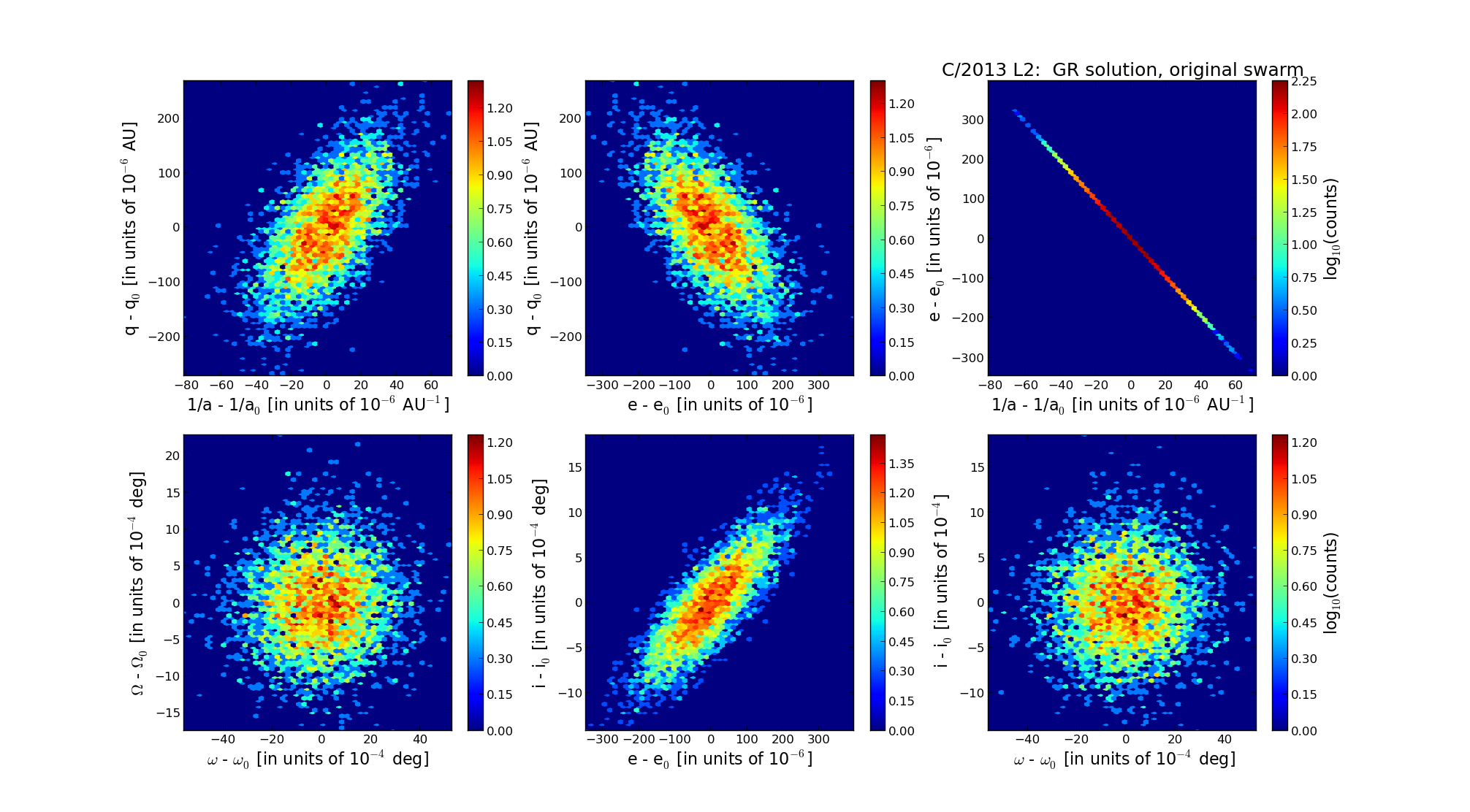C/2013 L2 Catalina
more info
Comet C/2013 L2 was discovered on 2 June 2013 with the Catalina Sky Survey, that is more than one year after perihelion passage, and next observed 121 days (0.33 yr) in a range of heliocentric distances from 5.71 au to 6.22 au.
Comet had its closest approach to the Earth on 2 July 2012 (3.888 au), less than two months after perihelion.
C/2013 L2 suffered small planetary perturbations during its passage through the planetary system.
This Oort spike comet suffers small planetary perturbations during its passage through the planetary system; these perturbations lead to a more tight future orbit (see future barycentric orbits).
See also Królikowska and Dybczyński 2017.
Comet had its closest approach to the Earth on 2 July 2012 (3.888 au), less than two months after perihelion.
C/2013 L2 suffered small planetary perturbations during its passage through the planetary system.
This Oort spike comet suffers small planetary perturbations during its passage through the planetary system; these perturbations lead to a more tight future orbit (see future barycentric orbits).
See also Królikowska and Dybczyński 2017.
| solution description | ||
|---|---|---|
| number of observations | 242 | |
| data interval | 2013 06 02 – 2013 10 01 | |
| data type | observed only after perihelion (POST) | |
| data arc selection | entire data set (STD) | |
| range of heliocentric distances | 5.71 au – 6.22au | |
| detectability of NG effects in the comet's motion | NG effects not determinable | |
| type of model of motion | GR - gravitational orbit | |
| data weighting | YES | |
| number of residuals | 471 | |
| RMS [arcseconds] | 0.32 | |
| orbit quality class | 2a | |
| orbital elements (barycentric ecliptic J2000) | ||
|---|---|---|
| Epoch | 1706 06 07 | |
| perihelion date | 2012 05 10.93968236 | ± 0.00694253 |
| perihelion distance [au] | 4.87338707 | ± 0.00008038 |
| eccentricity | 0.99955681 | ± 0.00009237 |
| argument of perihelion [°] | 1.935539 | ± 0.001533 |
| ascending node [°] | 285.835153 | ± 0.000544 |
| inclination [°] | 106.735662 | ± 0.00044 |
| reciprocal semi-major axis [10-6 au-1] | 90.94 | ± 18.95 |
| file containing 5001 VCs swarm |
|---|
| 2013l2a5.bmi |

